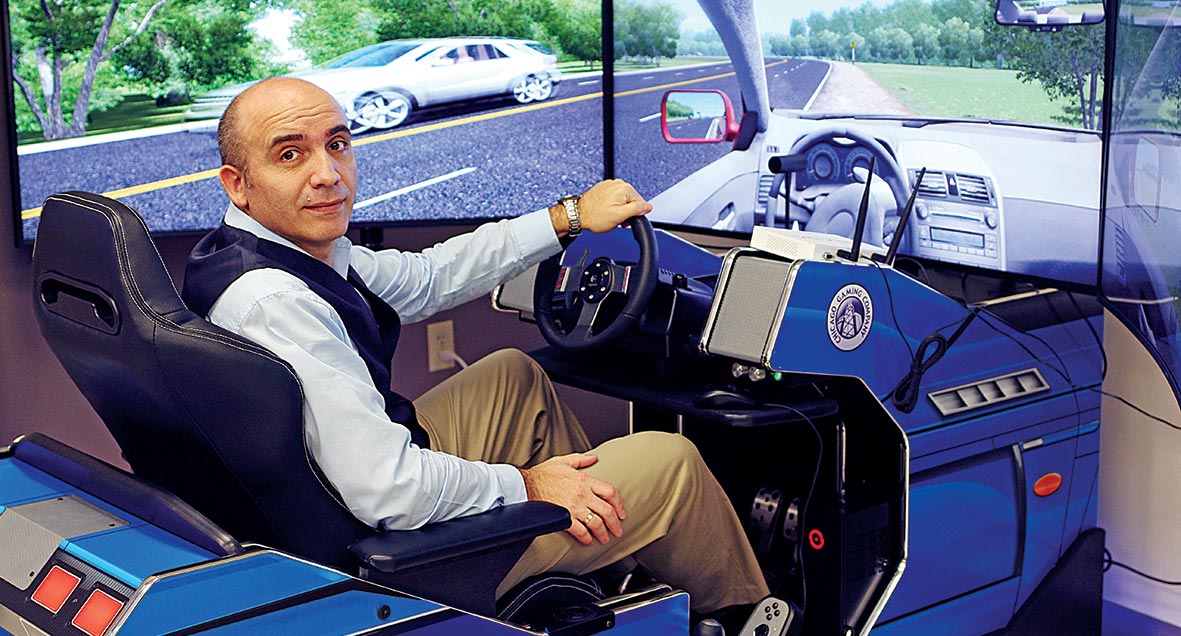Traffic Lab's Solutions to Nationwide Gridlock
In 1990, some 193 million registered vehicles traveled U.S. highways; by 2014, according to the Department of Transportation, that figure soared to 260 million. The Sunshine State ranked third with 15.5 million registered vehicles, behind Texas (20.8 million) and California (28.6 million).
The increase in vehicles coupled with a booming population have created a perfect storm for traffic congestion. The Laboratory for Adaptive Traffic Operations & Management (LATOM) in the College of Engineering and Computer Science is hard at work researching ways to mitigate roadway gridlock.
The lab is doing research related to traffic operations and management, and trying to help government agencies better manage traffic in urban areas on roads that have traffic signals. The lab’s research seeks to optimize capacity on existing main roadways to avoid gridlock, while forestalling investing millions of dollars in additional infrastructure.
“Such an expenditure increases carbon footprint, occupies precious space in urban settings and further increases urban sprawl,” said Aleksandar Stevanovic, Ph.D., director of the lab. On the other hand, shifting people to other modes of transportation is costly, take years to build and may limit commuting flexibility and convenience.
“Before we have to move to other alternatives we need to ensure we fully utilize capacity of the urban road network that already exists,” Stevanovic said. “Current systems don’t necessarily fully utilize capacity. That’s where the lab’s research comes in to play.”
Aleksandar Stevanovic, associate professor and director of the Lab for Adaptive Traffic Operations & Management. A driving simulator, in the lab, will share traffic signal messages with drivers allowing the traffic signal to sense approaching vehicles so that the light turns green sooner. It uses Oculus Rift glasses, common in video games. Virtual pedestrians will be able to interact with a virtual car in traffic streams along with pedestrians, cyclists and others.
If you would like more information, please contact us at dorcommunications@fau.edu.
